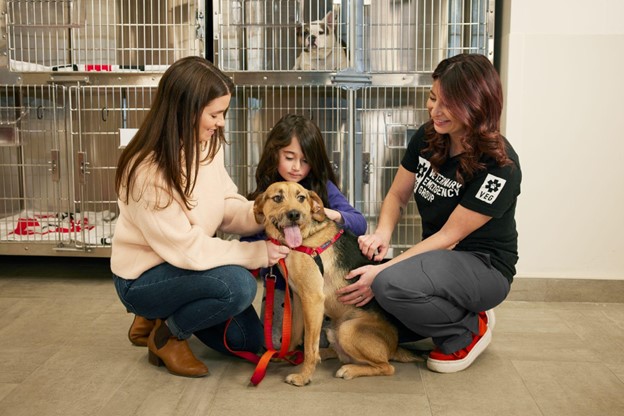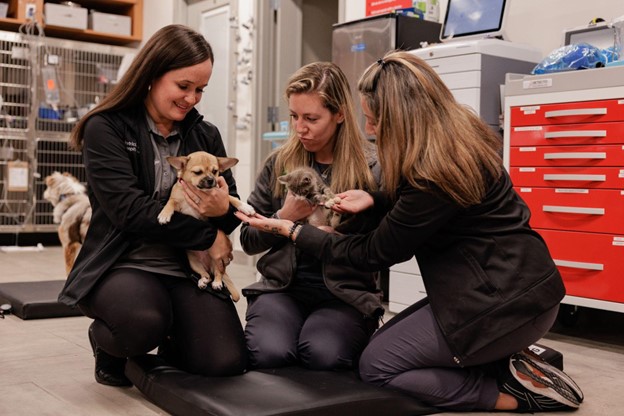
An excited pet parent picks up their new pup from the shelter with a ton of things on their mind: deciding on a new name, what type of food to buy, how many toys they should treat their pet with, and most importantly, whether they should get female dogs spayed.
This World Spay Day, Feb. 28, it is important to revisit and recognize the importance of spaying and communicate with our clients how this can help preserve the health and well-being of their pets.
Avoiding spaying may lead to serious infections
Veterinarians should educate new dog owners on the risks of not spaying their animals, particularly the possibility of pyometra infection, one of the most common and potentially life-threatening diseases.
This infection occurs in the dog’s uterus, an environment where bacteria can quickly grow, and is a product of maintaining their estrous cycle or “going into heat.”
There are two types of pyometra infections: open and closed. An open infection may be more manageable for pet parents and veterinarians to identify because the infection is not contained within the uterus, resulting in visible yellow-brown discharge. Closed pyometra does not usually result in discharge, causing it to go undetected for longer periods. This makes it more life-threatening, with the possibility of uterine rupture as it continues to fill and swell with the infection. Sepsis is a common and potentially fatal result since it is difficult for a veterinarian to treat.

How to know if a dog has pyometra and what to do
Additional symptoms of pyometra include increased thirst and urination, poor appetite, lethargy, fever, vomiting, visible pain, and pale gums. To help veterinarians in patient visits, these are some questions to ask dog owners:
- “Does your dog respond adversely to pressure on their lower abdomen? Are they whining or crying frequently for no apparent reason?”
- “Is your pup less interested than usual in their favorite activities? Do they appear disinterested in playing or extremely tired more often than usual?”
- “Do you have to take your dog outside more frequently? Do they cry at the door and create a sense of urgency?”
- “Have you needed to fill up the water bowl more than usual? Have you noticed they are not finishing their meals?”
If a pet owner suspects an infection or identifies any combination of the listed signs, proceed to further evaluate the dog through a series of tests, including point of care ultrasound (POCUS) to identify an infected uterus, radiographs, urine sample, blood work, and vaginal cytology. If an infection is confirmed, immediately follow up with treatment to avoid further complications.
Treating pyometra
The best treatment for pyometra is an emergency spay, a riskier removal of the uterus and ovaries than a spay for a healthy dog. This is another factor to help encourage owners to have their pets spayed early while in a stable state. Following the surgery, some dogs may need more intensive care for monitoring for sepsis, shock, dehydration, or anemia. Typically, the dog is hospitalized for a day or two and ensuring she wears a cone to avoid any licking that can irritate or open the wound.
Schedule your patient for a follow-up one week post-surgery for suture removal and general check-up
Getting involved
On World Spay Day, and beyond, advocate for your patients by spreading the word about the importance of spaying. Equip your practice in providing sufficient information about the procedure, how it can impact their pets’ longevity, and reduce risks of certain types of diseases.
Warren Miles, DVM, is a graduate from the University of Florida and Tuskegee’s College of Veterinary Medicine. Dr. Miles was born and raised in New Jersey, where his passion for animal health and veterinary medicine was first curated from his many experiences with animals both in and out of his own home. Miles enjoys being engulfed in nature and has a deep passion for the welfare and sustainability of wild animals and their wild spaces, as well as a general focus and interest in animal/human nutrition.
